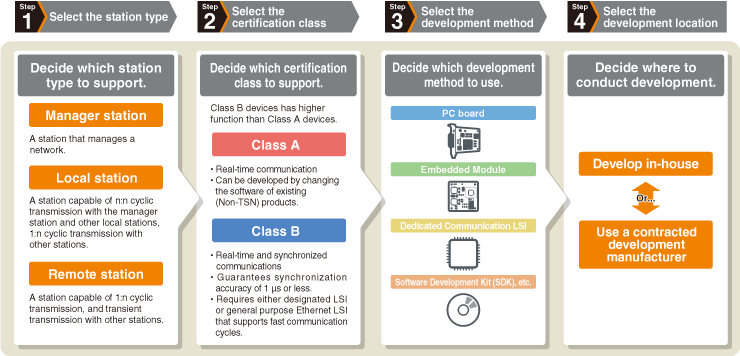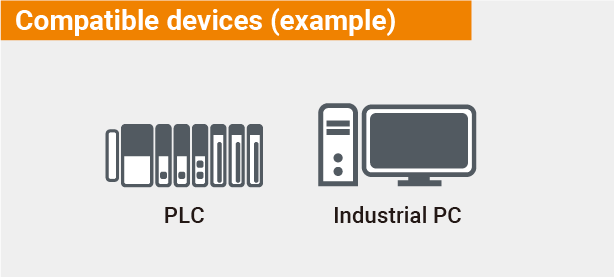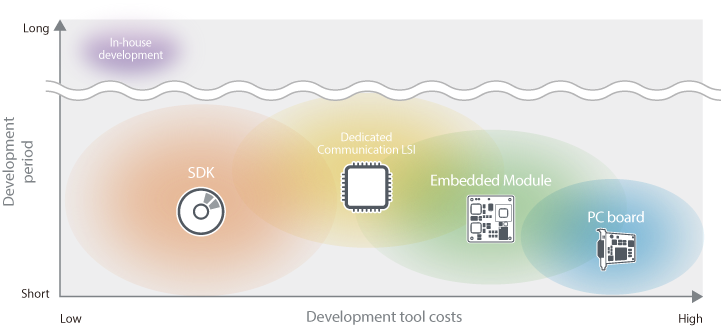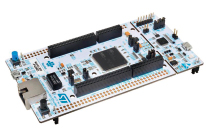Process flow for developing CC-Link IE TSN compatible products
Development procedure for CC-Link IE TSN compatible products.
Steps when considering development

- *Some of the items to be considered during development are different for recommended wiring components, such as Ethernet switches, cables, and connectors.
- *"SDK" is an abbreviation for Software Development Kit.
Step1. Select the station type
Manager station

- *Device stations : A general term other than manager stations such as local stations and remote stations.
Local station

Remote station
A station capable of 1:n cyclic transmission, and transient transmission with other stations. It has a server function and client function for transient transmission.

Step2. Select the certification class
- CC-Link IE TSN has different certification classes depending on the functions and performance of the device (node) and Ethernet switches.
- Certification classes include A and B, with B being the higher function.
Device
- It is recommended to develop certification class B products that have a wide variety of applications. Develop certification class A products only when modifying the software of existing products (not supporting TSN).
- ─ : Implementation not required
| No. | Functions | Conditions | Certification class | |
|---|---|---|---|---|
| A | B | |||
| 1 | Reception/Relay | Full rate reception/relay(*1、*2) | ― | ● |
| 2 | Supported standards | IEEE802.1AS compliant | ― | ● |
| IEEE1588 compliant | ― | -(*5) | ||
| IEEE802.1Qbv compliant | ― | ● | ||
| 3 | Synchronization accuracy | 1 μs or less | ― | ●(*4) |
| 4 | Communication method | Time sharing method | ― | ● |
| Time managed polling method | ● | ― | ||
| 5 | Cyclic transmission | VLAN | ● | ●(*6) |
| Unicast | ● | ● | ||
| Broadcast/Multicast | -(*3) | ● | ||
| 6 | Transient transmission | NRSV-Transient | ● | ● |
- *11 port: Receive, 2 ports or more: Receive and relay
- *2The communication speed does not matter if it is 100 Mbps or higher.
- *3Implementation is required for local stations
- *4To guarantee the accuracy of 1 μs for the time synchronization, configure a system only with certification Class B products. In this case, do not place a certification Class A product (including a Ethernet switches) between certification Class B products.
- *5When the protocol version is 1.0, implementation is required. For details, please refer to CC-Link IE TSN Specifications (Overview).
- *6When the protocol version is 1.0, implementation is not required. For details, please refer to CC-Link IE TSN Specifications (Overview).
The manager station must be able to communicate with both certification Class A device stations and certification Class B device stations.
Device stations must be certification Class A or certification Class B products and be able to communicate with the manager station.
| No. | Functions | Protocol version 2.0 | Protocol version 1.0 |
|---|---|---|---|
| 1 | Communication method(*) | Time sharing method Time managed polling method |
Time sharing method |
| 2 | Supported standards | IEEE802.1AS compliant | IEEE802.1AS compliant IEEE1588 compliant |
| 3 | Cyclic transmission | VLAN required | VLAN optional |
- *In the time-sharing system method, the synchronized time at each station is utilized to transmit simultaneously in both directions, whereas in the time managed polling method, cyclic frames are transmitted to the manager station after the device stations receive cyclic frames.
Ethernet switches
- ─ : Implementation not required
| No. | Functions | Conditions | Certification class | |
|---|---|---|---|---|
| A | B | |||
| 1 | Link up/Relay | 1000BASE-T(IEEE802.3ab) compliant | ●(*) | ●(*) |
| 100BASE-TX(IEEE802.3u) compliant | ||||
| Auto MDI/MDI-X | ● | ● | ||
| Auto negotiation | ● | ● | ||
| 2 | Supported standards | IEEE802.1AS compliant | ― | ● |
| IEEE1588 compliant | ― | ― | ||
| 3 | Synchronization accuracy | 1 μs or less | ― | ● |
| 4 | Time aware Queuing | IEEE802.1Qbv compliant | ― | ● |
- * Either one or both classes must be supported.
Step3. Select the development method
Extensive lineup of supported products
Various types of product development are supported, from high-performance devices implemented on dedicated ASIC/FPGA to low-cost devices implemented on general-purpose Ethernet chips using software protocol stacks.
Types
| Development tool |
||||
|---|---|---|---|---|
| Hardware/ Software |
Hardware | Hardware | Hardware | Software |
| Use | Connects to PCI or PCI Express interface. | Connects user boards and embedded interface boards via a general-purpose bus (e.g., 16 bit parallel bus). | Based on the interface specifications of the released communication LSI, users can mount it on the board. | Implements the released software into devices compatible with general-purpose Ethernet communication. |
Duration and cost will vary depending on the development method selected.

Differences in Communication Accuracy between Product Combinations
| Combination examples |
|
|
|
|
|---|---|---|---|---|
| Communication speed | 1 Gbps | 1 Gbps | 100 Mbps | 100 Mbps |
| Communication accuracy |
|
|||
Step4. Select the development location
Develop in-house
Various development methods can be used to internally develop communication interfaces.

Use a contracted development manufacturer
As one of the methods of clearing the technical and personnel issues in internal development, it is possible to commission a manufacturer to develop communication interface hardware and software.
CC-Link IE TSN development tool partners
| Partners | Station type | Certification classes | Development tool | ||
|---|---|---|---|---|---|
Built-in Module |
Communication LSI |
SDK |
|||
 |
Remote station | B | ● | ||
 |
Manager/ Local station |
B | ● | ||
| Remote station | B/A | ● | |||
 |
Manager | B | ● | ||
| Remote station | B/A | To be released soon | |||
 |
Remote station | B | ● | ||
 |
Remote station | B | To be released soon | ||
PC board is under consideration by partners.
For details, please check Introducing Development Tool.
Partners under consideration for development include:

Sample codes and tools to support development
Sample code and tools to support CC-Link IE TSN development are available free of charge.
Members can download these from CLPA website free of charge.
Sample code for CC-Link IE TSN remote station Class A
- ❶Compact sample code for remote stations
- ❷Software and API design enables easy application to Industrial Ethernet and CC-Link IE Field Network Basic devices
- ❸Free download from CLPA website

| No. | Item | Product name | Version | Manufacturer |
|---|---|---|---|---|
| 1 | Evaluation board | NUCLEO-F439ZI* | - | ST-Microelectronics |
| 2 | Integrated development environment | STM32CubeIDE | 1.7.0 | ST-Microelectronics |
| 3 | OS | FreeRTOS | V10.3.1 | Amazon Web Services |
| 4 | IP stack | lwIP(lightweight IP) | 2.1.2 | IwIP Developer Group |

NUCLEO-F439ZI
(STMicroelectronics)
* On-board microcontroller (STM32F429ZIT6)
Frequency :180 MHz
CPU :ARM Cortex-M4
Flash :2,048 Kbyte
RAM :256 Kbyte
CC-Link IE TSN Wireshark plugin
CC-Link IE TSN Wireshark plugin makes it possible to simplify the display of CC-Link IE TSN protocol packet data on Wireshark. This greatly helps users to analyze data packets of protocols.